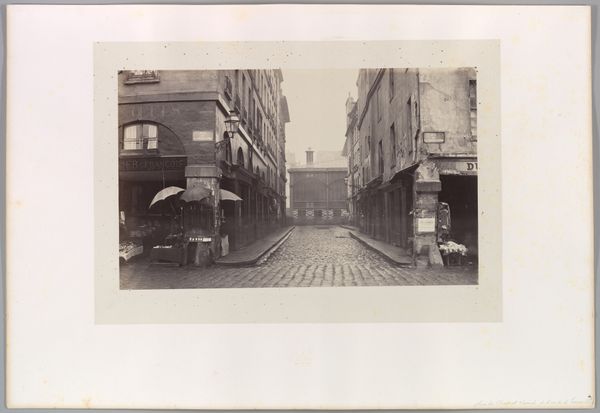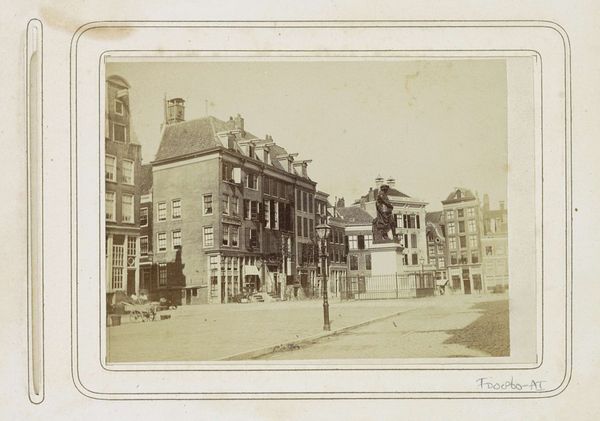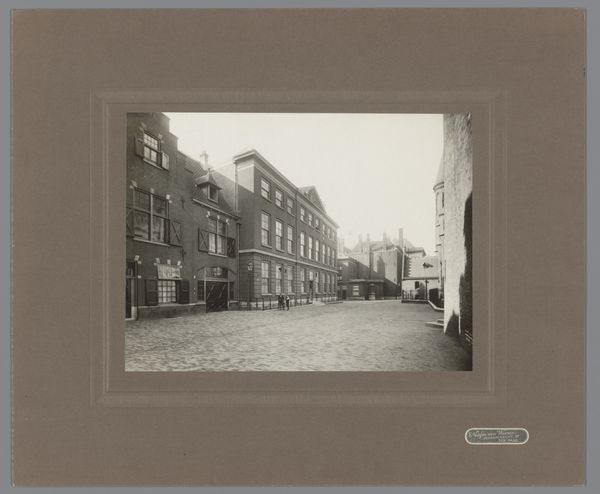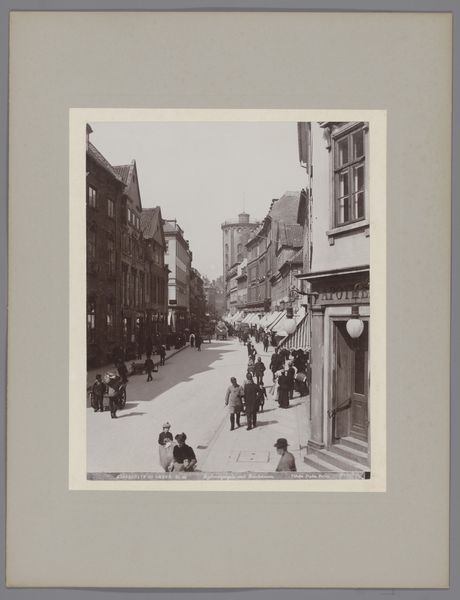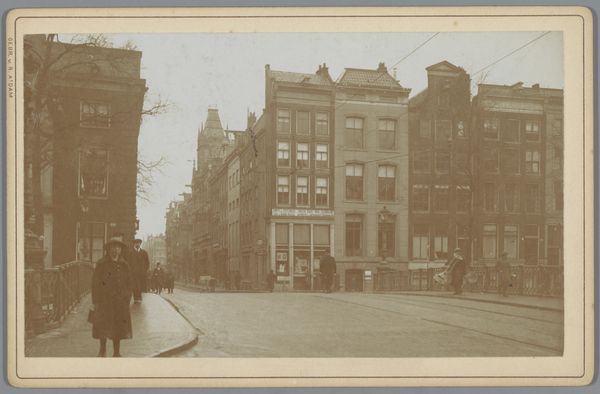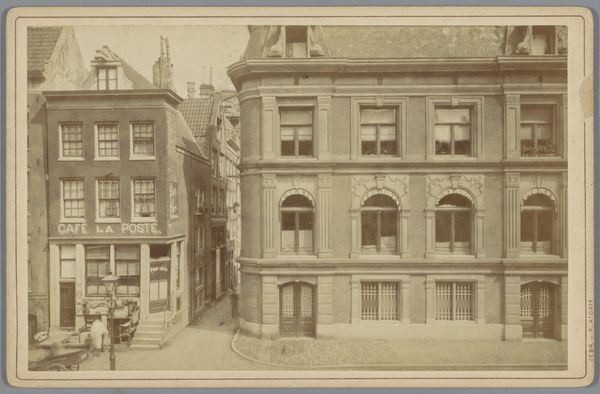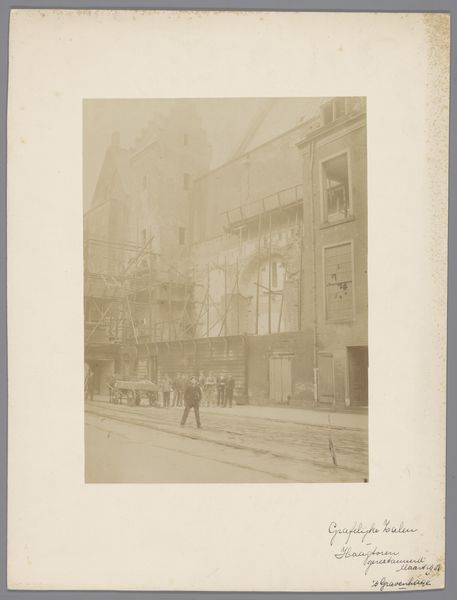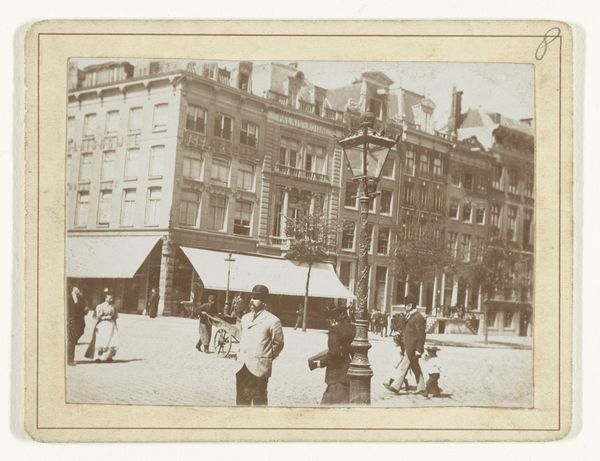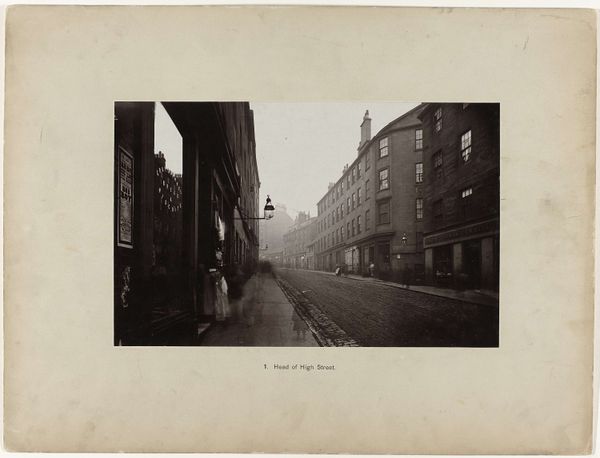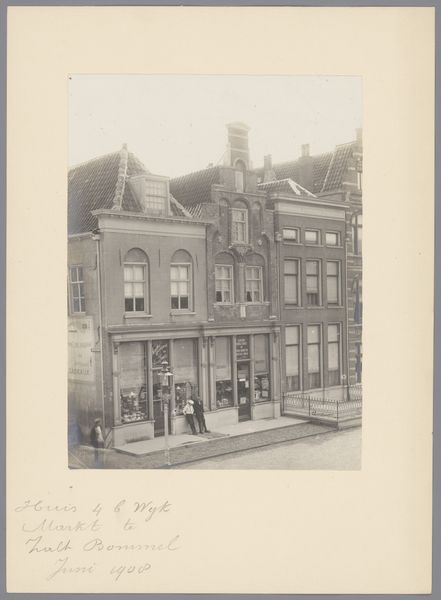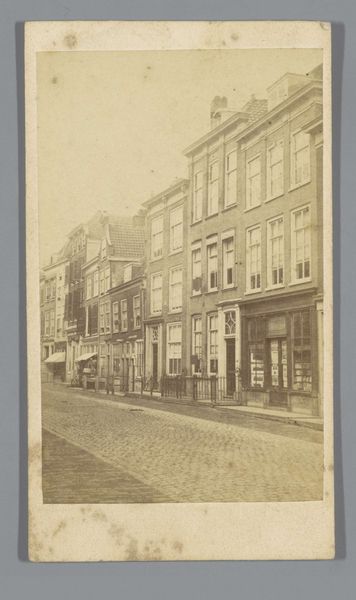
Dimensions: height 171 mm, width 231 mm, height 179 mm, width 231 mm, height 189 mm, width 249 mm
Copyright: Rijks Museum: Open Domain
Curator: Let's consider Breitner’s "Gezicht op het Rokin te Amsterdam," a gelatin silver print made sometime between 1904 and 1908, offering a fascinating snapshot of Amsterdam at the turn of the century. Editor: My first impression? It's wonderfully melancholy. The tones are muted, almost ghostly. It feels like a moment caught between eras, an image resisting easy consumption and demanding the time of the viewer. Curator: Absolutely. Breitner, though trained as a painter, became deeply interested in photography to document the rapidly changing urban landscape. The Rokin, once a bustling canal, had been partially filled, transforming the street into a new artery for the city. This piece documents that shift. Editor: And there's a definite social stratification evident too. You see figures in the background who are more prosperous but look at the figures blending into the storefronts of buildings with more traditional architecture. We need to address this invisible labor of city living. Curator: Precisely. Breitner was very interested in capturing everyday life as it was actually lived, which aligned with the ideals of the Amsterdam Impressionism movement. There are figures that do emerge to create more formal scenes on the city's newer, busier, grander street that show the growing infrastructure as something of spectacle. Editor: His unflinching depiction of life is what makes it so powerful, that gritty realism and also its formal nature are working on totally different planes. No one’s posing, right? The way they all occupy such different pockets of light, this city offers no true equalizing features and this can be witnessed in how everyone uses light and space. It mirrors the way systems do not permit access or success to everyone the same. Curator: It reflects the socio-political climate so succinctly. We are implicated in understanding a sense of both a burgeoning empire while also focusing our vision onto our individual lives that we navigate on our streets, never giving an accurate reflection of either end. This gives an immediate and relatable quality. Editor: What a charged simplicity. Considering the legacy, it is incredible. And in it is that ghosting and echoing. I feel like this single image contains centuries of the story that is not done being told. Curator: Indeed. It encourages reflection, it makes the world of Breitner relevant for so many reasons and the ways that history is never dead.
Comments
No comments
Be the first to comment and join the conversation on the ultimate creative platform.
